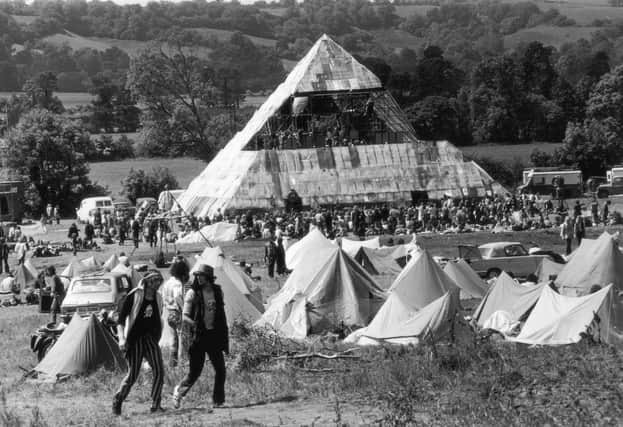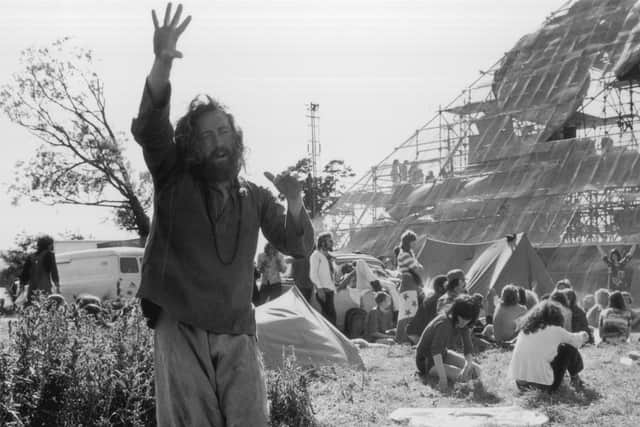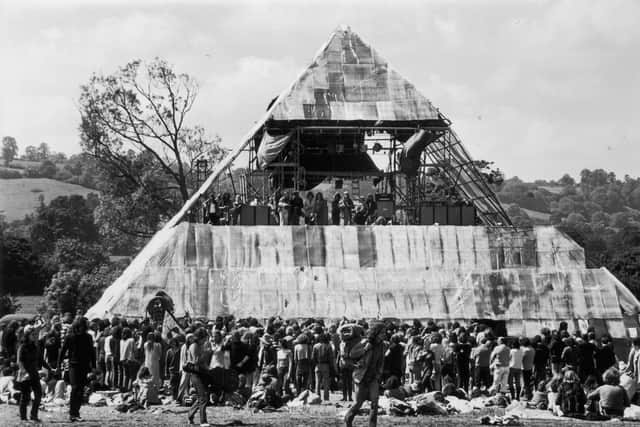The festival that never was – rare pictures of Glastonbury at 50


Despite the asking price of £270 for a five-day pass, all 200,000 tickets were snapped up within half an hour of going on sale last October.
The Glastonbury Festival is a corporate undertaking now, but as these pictures from the archive remind us, its spirit and atmosphere is not so very different from when the first hippies arrived there in 1970.
Advertisement
Hide AdAdvertisement
Hide AdThe organiser, Michael Eavis, had conceived the idea after seeing Led Zeppelin play an open-air concert at the nearby Bath Showground. He charged just £1 for visitors to what he initially called the Pilton Festival, and around 1,500 people took him up on the offer, on the promise of seeing Wayne Fontana and The Kinks. In the event, both were replaced at the last minute by the little-known outfit Tyrannosaurus Rex, featuring Marc Bolan.


The following year, the “Glastonbury Free Festival” was bigger and better, with David Bowie and a stage built from scaffolding and metal sheets to resemble the Great Pyramid of Giza. Nicolas Roeg and David Puttnam made a film of it, which they called Glastonbury Fayre.
But music festivals, like the youthful optimism of the late 1960s, proved to be a passing phase, and it was not until 1979 that Glastonbury was officially reborn, with Peter Gabriel and Phil Collins among the acts.
It grew throughout the next decade – despite the pitched battles between security guards and new age travellers in 1990 – and in 1994, Channel 4 began televising it to an audience too young to know who Wayne Fontana was.
Advertisement
Hide AdAdvertisement
Hide AdEditor’s note: first and foremost - and rarely have I written down these words with more sincerity - I hope this finds you well.


Almost certainly you are here because you value the quality and the integrity of the journalism produced by The Yorkshire Post’s journalists - almost all of which live alongside you in Yorkshire, spending the wages they earn with Yorkshire businesses - who last year took this title to the industry watchdog’s Most Trusted Newspaper in Britain accolade.
And that is why I must make an urgent request of you: as advertising revenue declines, your support becomes evermore crucial to the maintenance of the journalistic standards expected of The Yorkshire Post. If you can, safely, please buy a paper or take up a subscription. We want to continue to make you proud of Yorkshire’s National Newspaper but we are going to need your help.
Postal subscription copies can be ordered by calling 0330 4030066 or by emailing [email protected]. Vouchers, to be exchanged at retail sales outlets - our newsagents need you, too - can be subscribed to by contacting subscriptions on 0330 1235950 or by visiting www.localsubsplus.co.uk where you should select The Yorkshire Post from the list of titles available.
Advertisement
Hide AdAdvertisement
Hide AdIf you want to help right now, download our tablet app from the App / Play Stores. Every contribution you make helps to provide this county with the best regional journalism in the country.
Sincerely. Thank you.
James Mitchinson, Editor
Comment Guidelines
National World encourages reader discussion on our stories. User feedback, insights and back-and-forth exchanges add a rich layer of context to reporting. Please review our Community Guidelines before commenting.